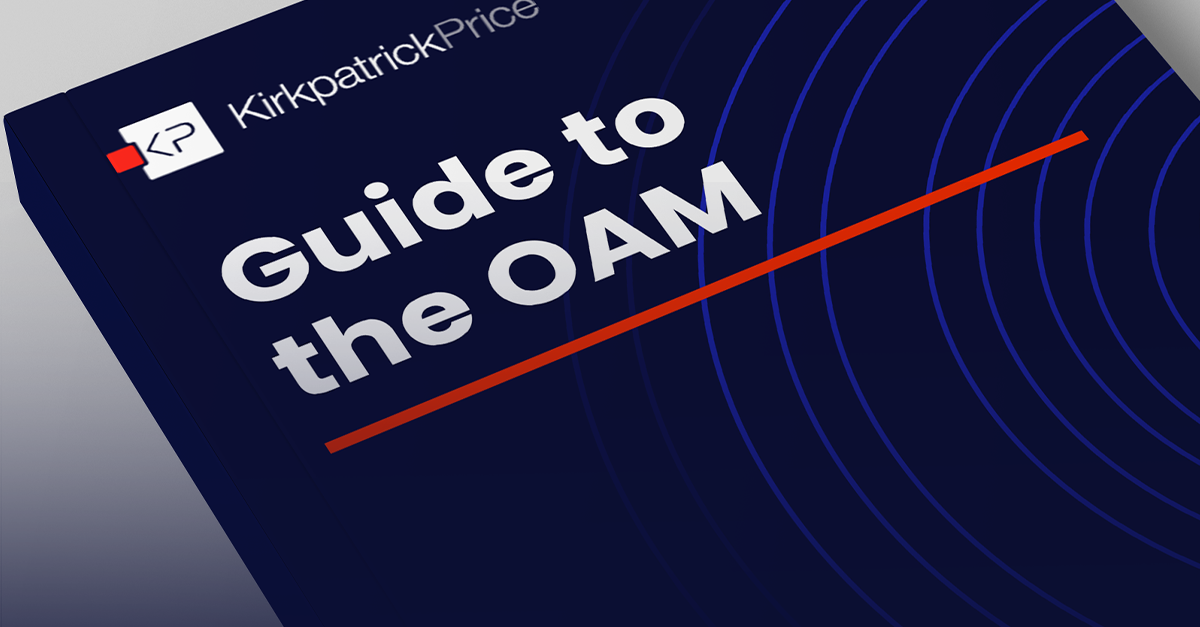
When you choose an audit partner, there are certain qualities that you’re likely looking for such as experience, attention to detail, quality, audit tools, and the firm’s audit processes. We know that there’s a lot of audit firms out there, making the decision that much harder. If it’s your first time undergoing an audit or even if you are familiar with the processes, narrowing down the right partner for your organization can be difficult. At Kirkpatrick Price, we know and understand the fear and stresses associated with auditing – that’s why we created the Online Audit Manager, the innovative, proprietary tool included in our streamlined audit process.
The Online Audit Manager: An Innovative Audit Tool
The Online Audit Manager is a tool that was developed when we saw a need in the industry to streamline an audit through an online portal. It’s based on experienced information systems and senior-level security auditors’ expertise in auditing practices. The OAM connects you with your specialized audit team quickly, so you can begin to receive remote guidance early in the audit process. Your experienced auditor will work with you to complete 80% of the audit before they ever step foot on site. Within the OAM are free resources that are available to help you create the most effective policies and procedures, ensuring that you have the proper controls in place to demonstrate your compliance with various frameworks. The Online Audit Manager also gives you the flexibility to work on your engagement as you have the time and be able to easily divvy up the workload amongst appropriate personnel. Ultimately, throughout the engagement, you will have created an audit trail that will demonstrate how you continue to improve and mature your security practices.
4 Reasons the Online Audit Manager Makes Audit Engagements Easier
1. The OAM is Included in Your KirkpatrickPrice Engagement
Are you looking to partner with a firm that is upfront and transparent about its audit tools, processes, and fees? While most firms require their customers to pay an additional fee to use similar audit tools to the OAM, we’re committed to helping our clients get the most out of their audits – and that starts by giving our clients a tool that simplifies the audit process for them at no extra cost. When our clients engage with us, they’ll automatically receive access and training on how to use the Online Audit Manager. Not all audit tools are created equal. Perform your due diligence when considering audit firms and require a demo of how their tool works. In fact, if your organization is considering a firm that says they have a similar portal, but they don’t allow you to demo it, you should automatically be suspicious of their quality and integrity.
2. Everything is All in One Place
Are you worried about how to manage your organization’s audit engagement? There are a lot of moving parts during an audit, requiring help from different departments, personnel, and organizations – making clear communication and documentation difficult. The OAM alleviates this issue by acting as the main hub for communication, documentation, and resources during the audit engagement. Our clients can upload required evidence and documentation, ask their auditor questions, and find resources if they’re confused about a specific framework requirement, plus auditors can submit their work papers directly in the OAM.
3. Achieve Multiple Compliance Objectives
Is your organization required to comply with multiple legal requirements and/or frameworks? Does the thought of having to undergo more than one audit scare you? With an audit tool like the OAM, conquering multiple compliance objectives is possible. How? When you complete an audit with Kirkpatrick Price, your answers and evidence are saved in the portal. This means that when you engage in multiple audits with us, you won’t have to answer the same question more than once. Plus, you can compare how close you are to additional compliance achievements.
4. Track Your Progress
Are you worried about the project size of an audit? One of the biggest concerns we hear our clients express when it comes to an audit engagement is the time it takes to complete an audit. Completing an information security audit is a major accomplishment, but it is one that takes time to be done correctly. In the Online Audit Manager, however, organizations can track their audit engagement progress and issue alerts to keep members of the audit engagement on track.
Achieving multiple compliance goals can be a daunting task, but with an audit tool as innovative as Kirkpatrick Price’s Online Audit Manager, it’s more feasible than you might think. If you’re wondering how you can meet all of your compliance goals, let us walk you through an Online Audit Manager demo and discuss your compliance plan.
More Assurance Resources
When Will You See the Benefit of an Audit?
5 Questions to Ask When Choosing Your Audit Partner
Choosing the Online Audit Manager: One Tool, Multiple Audits




